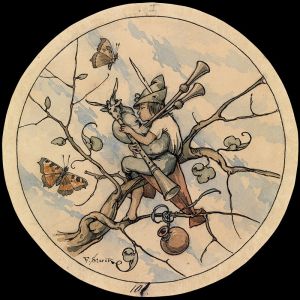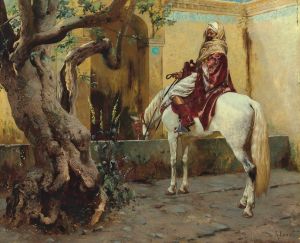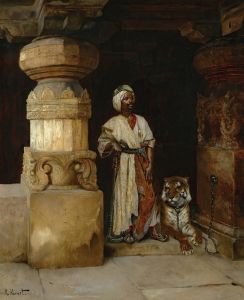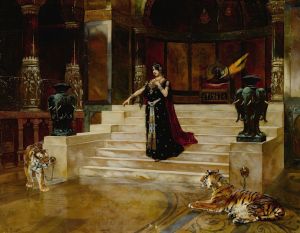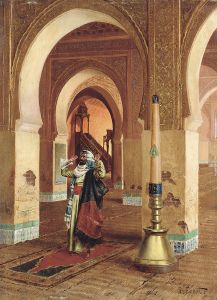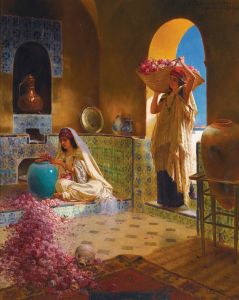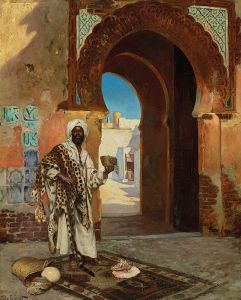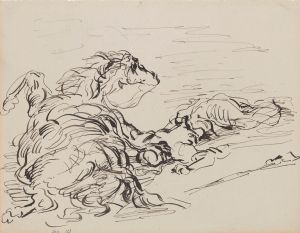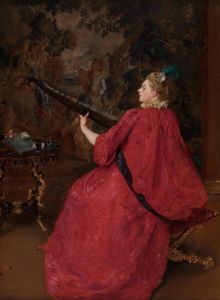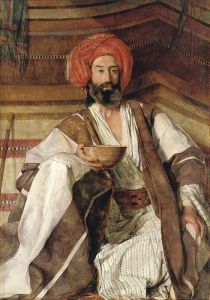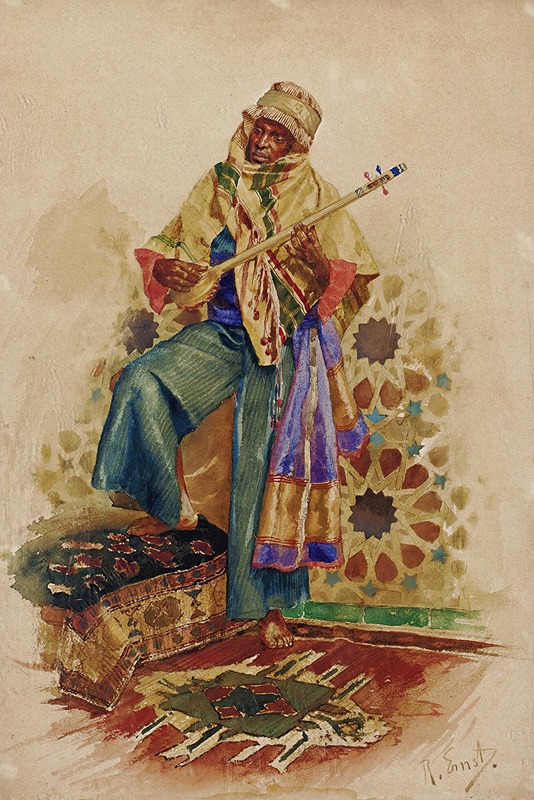
An Arab Musician
A hand-painted replica of Rudolf Ernst’s masterpiece An Arab Musician, meticulously crafted by professional artists to capture the true essence of the original. Each piece is created with museum-quality canvas and rare mineral pigments, carefully painted by experienced artists with delicate brushstrokes and rich, layered colors to perfectly recreate the texture of the original artwork. Unlike machine-printed reproductions, this hand-painted version brings the painting to life, infused with the artist’s emotions and skill in every stroke. Whether for personal collection or home decoration, it instantly elevates the artistic atmosphere of any space.
Rudolf Ernst was an Austrian painter known for his Orientalist works, which depicted scenes from the Middle East and North Africa. Born in Vienna in 1854, Ernst was part of a movement of European artists who were fascinated by the cultures and aesthetics of the Orient, a term used at the time to describe regions of Asia and North Africa. His works are characterized by their detailed and romanticized portrayal of Eastern life, often focusing on architecture, textiles, and everyday scenes.
"An Arab Musician" is one of Ernst's notable paintings, showcasing his skill in capturing the intricate details and vibrant colors typical of Orientalist art. The painting depicts a musician, presumably of Arab descent, engaged in playing a traditional musical instrument. Ernst's attention to detail is evident in the musician's attire, which is richly decorated and indicative of the cultural attire of the period and region he sought to represent. The background and setting of the painting are equally detailed, often featuring elements such as ornate carpets, intricate tile work, and lush interiors that suggest a setting of opulence and cultural richness.
Ernst's work, including "An Arab Musician," is part of a larger body of Orientalist art that was popular in the 19th and early 20th centuries. This genre often romanticized and idealized Eastern cultures, sometimes at the expense of accuracy. Artists like Ernst were inspired by the exoticism and perceived mystique of the East, which was a subject of great fascination in Europe during this time. While these works are appreciated for their artistic merit and technical skill, they are also critiqued for perpetuating stereotypes and presenting a Eurocentric view of Eastern cultures.
The Orientalist movement, of which Ernst was a part, was influenced by the increased interaction between Europe and the East due to colonial expansion, trade, and travel. Artists would often travel to these regions to gather inspiration, though many, including Ernst, also relied on second-hand accounts and their imagination to create their works. This often led to a blend of reality and fantasy in their depictions.
Rudolf Ernst's paintings, including "An Arab Musician," are housed in various private collections and museums around the world. They continue to be studied and appreciated for their contribution to the Orientalist genre and for their reflection of the cultural attitudes of their time. Ernst's ability to capture the intricate details of his subjects, from the textures of fabrics to the expressions of his figures, demonstrates his technical prowess and his fascination with the subject matter.
In summary, "An Arab Musician" by Rudolf Ernst is a quintessential example of Orientalist art, reflecting both the allure and the complexities of cultural representation during the period. While it offers a window into the artistic trends and cultural perceptions of the 19th century, it also invites contemporary viewers to consider the broader implications of such portrayals in art history.





